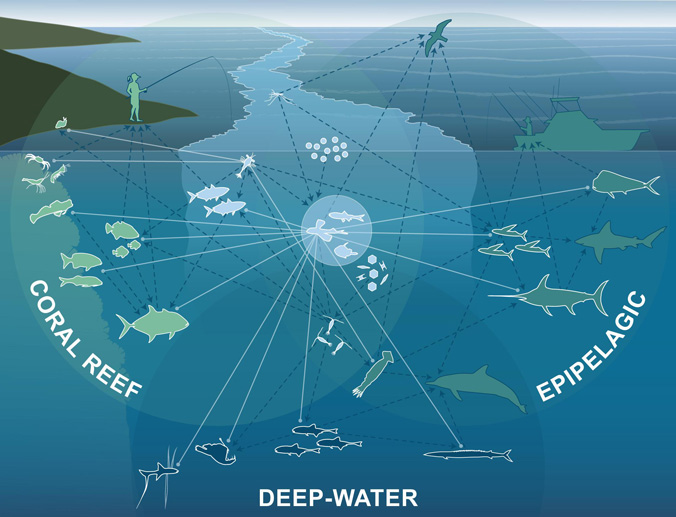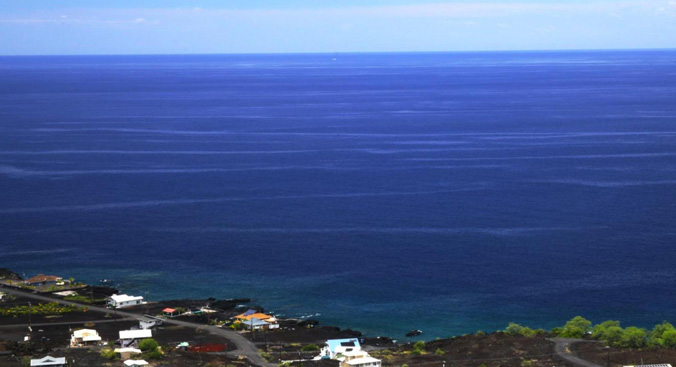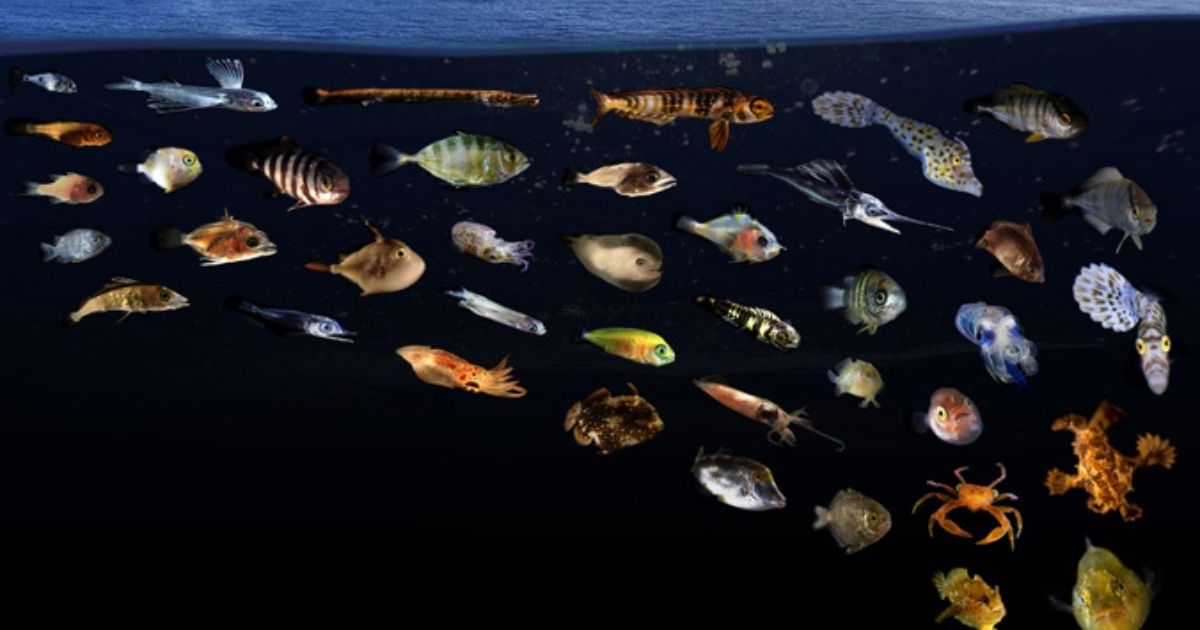To survive the open ocean, tiny fish larvae must find food, avoid predators and navigate ocean currents to their adult habitats. But what the larvae of most marine species experience during these great ocean odysseys has long been a mystery, until now.
A team of scientists from NOAA’s Pacific Islands Fisheries Science Center, the University of Hawaiʻi at Mānoa, Arizona State University and elsewhere have discovered that a diverse array of marine animals find refuge in so-called “surface slicks” in Hawaiʻi. These ocean features create a superhighway of nursery habitats for more than 100 species of commercially and ecologically important fishes, such as mahi-mahi, jacks and billfish. The findings were published in Scientific Reports.
Surface slicks are meandering lines of smooth surface water formed by the convergence of ocean currents, tides, and variations in the seafloor and have long been recognized as an important part of the seascape. The traditional Hawaiian mele (song) Kona Kai ʻŌpua describes slicks as Ke kai maʻokiʻoki, or “the streaked sea” in the peaceful seas of Kona. Despite this historical knowledge, and scientists’ belief that slicks are important for fish, the tiny marine life that slicks contain has remained elusive.
To unravel the slicks’ secrets, the research team conducted more than 130 plankton net tows to search for larvae and other plankton inside the surface slicks and surrounding waters along the leeward coast of Hawaiʻi Island, while studying ocean properties. They then combined those in-water surveys with a new technique to remotely sense slick footprints using satellites.
 Diagram showing ecological connections in surface slicks. (Photo credit: Whitney et al. 2021)
Diagram showing ecological connections in surface slicks. (Photo credit: Whitney et al. 2021)
A diverse marine nursery
Though the slicks covered only about 8% of the ocean surface in the 380-square-mile-study area, they contained an astounding 39% of the study area’s surface-dwelling larval fish; more than 25% of its zooplankton, which the larval fish eat; and 75% of its floating organic debris such as feathers and leaves. Larval fish densities in surface slicks off West Hawaiʻi were, on average, more than seven times higher than densities in the surrounding waters.
The study showed that surface slicks function as a nursery habitat for marine larvae of at least 112 species of commercially and ecologically important fishes, as well as many other animals. These include coral reef fishes, such as jacks, triggerfish and goatfish; pelagic predators, for example mahi-mahi; deep-water fishes, such as lanternfish; and various invertebrates, such as snails, crabs and shrimp.
“We were shocked to find larvae of so many species, and even entire families of fishes, that were only found in surface slicks,” said lead author Jonathan Whitney, marine ecologist at NOAA and former postdoctoral fellow at the Joint Institute for Marine and Atmospheric Research in UH Mānoa’s School of Ocean and Earth Science and Technology (SOEST). “This suggests they are dependent on these essential habitats.”
This research is an example of UH Mānoa’s goal of Excellence in Research: Advancing the Research and Creative Work Enterprise (PDF), one of four goals identified in the 2015–25 Strategic Plan (PDF), updated in December 2020.
 Surface slicks off West Hawaii. (Photo credit: Jonathan Whitney, NOAA Fisheries and Paul Cox)
Surface slicks off West Hawaii. (Photo credit: Jonathan Whitney, NOAA Fisheries and Paul Cox)
An interconnected superhighway
“These ‘bioslicks’ form an interconnected superhighway of rich nursery habitat that accumulate and attract tons of young fishes, along with dense concentrations of food and shelter,” said Whitney. “The fact that surface slicks host such a large proportion of larvae, along with the resources they need to survive, tells us they are critical for the replenishment of adult fish populations.”
In addition to providing crucial nursing habitat for various species and helping maintain healthy and resilient coral reefs, slicks create foraging hotspots for larval fish predators and form a bridge between coral reef and pelagic ecosystems.
Explore this research through an interactive storymap.



